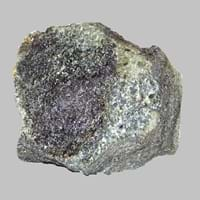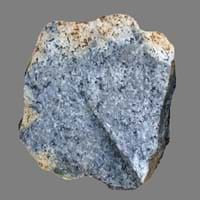Amphibolite and Syenite
Definition
Definition
Amphibolite can be defined as a granular metamorphic rock which mainly consist of hornblende and plagioclase
Syenite is a coarse-grained igneous rock which is composed mainly of alkali feldspar and various ferromagnesian minerals
History
Discoverer
Alexandre Brongniart
Unknown
Etymology
From Amphibole + -ite
From French syénite, from Latin Syenites (lapis ) (stone) of Syene
Class
Metamorphic Rocks
Igneous Rocks
Sub-Class
Durable Rock, Hard Rock
Durable Rock, Medium Hardness Rock
Family
Group
Not Applicable
Plutonic
Other Categories
Coarse Grained Rock, Medium Grained Rock, Opaque Rock
Coarse Grained Rock, Fine Grained Rock, Medium Grained Rock, Opaque Rock
Texture
Texture
Banded, Foliated, Massive
Earthy
Color
Black, Brown, Green, Grey
Brown, Buff, Cream, Green, Grey, Pink, White
Maintenance
Less
Less
Durability
Durable
Durable
Water Resistant
Yes
Yes
Scratch Resistant
Yes
Yes
Stain Resistant
Yes
No
Wind Resistant
No
Yes
Acid Resistant
Yes
Yes
Appearance
Foliated
Banded and Foilated
Uses
Architecture
Interior Uses
Countertops, Decorative Aggregates, Entryways, Floor Tiles, Flooring, Homes, Hotels, Kitchens
Flooring, Homes, Hotels, Interior Decoration
Exterior Uses
As Building Stone, As Facing Stone, Paving Stone, Office Buildings
As Building Stone, As Facing Stone, Paving Stone, Garden Decoration, Office Buildings
Other Architectural Uses
Curbing
Curbing
Industry
Construction Industry
As Dimension Stone, Building houses or walls, Cobblestones, Construction Aggregate, for Road Aggregate, Landscaping, Production of Glass and Ceramics, Roadstone
As Dimension Stone, Cement Manufacture, Construction Aggregate, for Road Aggregate, Landscaping, Making natural cement, Manufacture of Magnesium and Dolomite Refractories
Medical Industry
Not Yet Used
Not Yet Used
Antiquity Uses
Artifacts, Sculpture, Small Figurines
Artifacts, Monuments, Sculpture, Small Figurines
Other Uses
Commercial Uses
Cemetery Markers, Commemorative Tablets, Creating Artwork
Cemetery Markers, Creating Artwork
Types
Types
Hornblendite
Shonkinite
Features
Clasts are smooth to touch, Matrix variable, Surfaces are often shiny
Available in Lots of Colors and Patterns, Is one of the oldest rock, Matrix variable
Archaeological Significance
Monuments
Used
Used
Famous Monuments
Data Not Available
Data Not Available
Sculpture
Used
Used
Famous Sculptures
Data Not Available
Data Not Available
Pictographs
Not Used
Used
Petroglyphs
Not Used
Used
Figurines
Used
Used
Fossils
Absent
Absent
Formation
Formation
Amphibolite is a coarse-grained metamorphic rock which forms by metamorphism of mafic igneous rocks like basalt and gabbro or from the metamorphism of clay-rich sedimentary rocks like marl or graywacke.
Syenites are formed due to alkaline igneous activities and are generally formed in thick continental crustal areas or in Cordilleran subduction zones.
Composition
Mineral Content
Amphibole, Andalusite, Biotite, Calcite, Epidote, Garnet, Hornblade, Kyanite, Magnetite, Olivine, Plagioclase, Pyroxene, Staurolite, Wollastonite
Amphibole, Biotite, Feldspar, Hornblade, Micas, Muscovite or Illite, Plagioclase, Pyroxene, Quartz
Compound Content
Aluminium Oxide, CaO, Iron(III) Oxide, FeO, Potassium Oxide, MgO, MnO, Sodium Oxide, Phosphorus Pentoxide, Silicon Dioxide, Titanium Dioxide
Aluminium Oxide, CaO, Iron(III) Oxide, FeO, Potassium Oxide, MgO, MnO, Sodium Oxide, Phosphorus Pentoxide, Silicon Dioxide, Titanium Dioxide
Transformation
Metamorphism
No
Yes
Types of Metamorphism
Not Applicable
Burial Metamorphism, Cataclastic Metamorphism, Contact Metamorphism, Hydrothermal Metamorphism, Impact Metamorphism, Regional Metamorphism
Weathering
Yes
Yes
Types of Weathering
Chemical Weathering, Mechanical Weathering
Biological Weathering, Chemical Weathering, Mechanical Weathering
Erosion
Yes
Yes
Types of Erosion
Chemical Erosion, Glacier Erosion, Sea Erosion, Wind Erosion
Chemical Erosion, Coastal Erosion, Glacier Erosion, Sea Erosion, Water Erosion, Wind Erosion
Properties
Physical Properties
Hardness
6-7
5.5-6
Grain Size
Medium to Coarse Grained
Medium to Fine Coarse Grained
Fracture
Irregular to Conchoidal
Not Available
Streak
White to Grey
White
Porosity
Less Porous
Less Porous
Luster
Vitreous to Dull
Subvitreous to Dull
Compressive Strength
Not Available
150.00 N/mm2
14
Cleavage
Irregular
Perfect
Toughness
2.3
Not Available
Specific Gravity
2.5
2.6-2.7
Transparency
Opaque
Opaque
Density
2.85-3.07 g/cm3
2.6-2.8 g/cm3
Thermal Properties
Specific Heat Capacity
Not Available
0.92 kJ/Kg K
10
Resistance
Heat Resistant, Pressure Resistant, Wear Resistant
Heat Resistant, Impact Resistant, Wear Resistant
Reserves
Deposits in Eastern Continents
Asia
Russia, Turkey
China, India, Iran, Saudi Arabia, Sri Lanka, Taiwan, Thailand, Turkey, Vietnam
Africa
Burundi, Djibouti, Eritrea, Ethiopia, Kenya, Madagascar, Rwanda, Somalia, South Africa, Sudan, Tanzania, Uganda
Angola, Egypt, Madagascar, Namibia, Nigeria, South Africa
Europe
Germany, Greece, Iceland, Norway, Poland
Bulgaria, England, Germany, Norway, Romania, Switzerland
Others
Not Yet Found
Not Yet Found
Deposits in Western Continents
North America
Canada, USA
USA
South America
Brazil
Brazil, Chile
Deposits in Oceania Continent
Australia
South Australia, Western Australia
New Zealand, Queensland, South Australia, Western Australia
All about Amphibolite and Syenite Properties
Know all about Amphibolite and Syenite properties here. All properties of rocks are important as they define the type of rock and its application. Amphibolite belongs to Metamorphic Rocks while Syenite belongs to Igneous Rocks.Texture of Amphibolite is Banded, Foliated, Massive whereas that of Syenite is Earthy. Amphibolite appears Foliated and Syenite appears Banded and Foilated. The luster of Amphibolite is vitreous to dull while that of Syenite is subvitreous to dull. Amphibolite is available in black, brown, green, grey colors whereas Syenite is available in brown, buff, cream, green, grey, pink, white colors. The commercial uses of Amphibolite and Syenite are cemetery markers, commemorative tablets, creating artwork.
|
||
|
||
|










